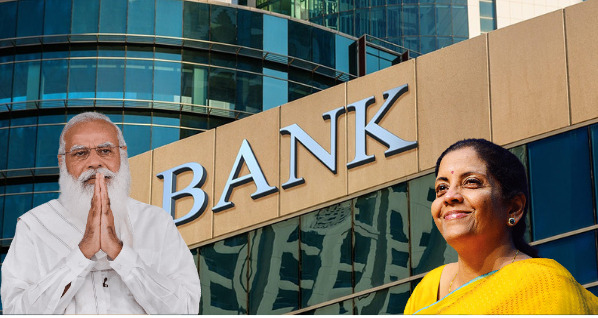Global credit rating agency Moody’s has finally got rid of its blinkers and revised the outlook for the Indian banking sector to stable from negative. The report stated that “the quality of corporate loans has improved, indicating that banks have recognised and provisioned for all legacy problem loans in this segment.”
Moreover, in the report titled, “Banking system outlook – India: Stabilizing asset quality and improved capital drive outlook change to stable”, the agency remarked that negative factors associated with the banks had receded.
The report read, “The pickup in economic activity will drive credit growth, which we expect to be 10%-13% annually. Weak corporate financials and funding constraints at finance companies have been key negative factors for banks but these risks have receded,”
After upgrading its India outlook to stable earlier this month, Moody's has now also upgraded its outlook for the banking sector:
"The quality of corporate loans has improved, indicating that banks have recognized and provisioned for all legacy problem loans in this segment." pic.twitter.com/vWJgmkex3n
— Nirmala Sitharaman Office (@nsitharamanoffc) October 20, 2021
It further added, “We have revised the outlook for the Indian banking system to stable from negative. The deterioration of asset quality since the onset of the coronavirus pandemic has been moderate, and an improving operating environment will support asset quality. Declining credit costs as a result of improving asset quality will lead to improvements in profitability,”
Reportedly, the agency believes that aided by a stable banking sector, India’s economy will continue to recover miraculously in the next 12-18 months, with GDP growing 9.3 per cent in the fiscal year ending March 2022 and 7.9 per cent in the following year.
Indian Banking sector – a mess
The Indian banking sector was a mess when the Modi government took charge. Despite the best efforts of the government, the banking sector in the country, dominated by the public sector banks (PSBs), improved a little. To solve the expanding problem of NPAs (Non-Performing Assets) – a legacy generously passed on by the previous UPA regimes, the Modi government, in close consultations with the RBI, brought the Insolvency and Bankruptcy Code, 2016. The measure was a huge success in solving corporate bankruptcy in India.
The reason behind this dim performance of the Indian banking sector is the domination of public sector banks (PSBs) which account for around 70 per cent of the country’s banking industry. It has been almost five decades since Indira Gandhi nationalised banking in 1969, intending to improve lending in ‘strategic areas’. However, since then the banking story of the country has only been in a downward spiral.
Read More: Rs 37,400 crore: IBC marks the biggest recovery of NPAs this year
The main reason for NPA accumulation is nonpayment by the banks’ clients. In simpler terms, it is like a shopkeeper giving a customer some goods on credit, and the customer is not able to pay back to the shopkeeper.
Most of the nonperforming assets in India are loans by government banks because the management of these banks gives loans to companies without checking the viability of the project or the ability of the client to pay back. However, as Moody’s stated, the problem has now been taken care of by the effective government of PM Modi.
Reducing Non Performing Assets
Before the Modi government came to the power in 2014, the total NPAs stood around 52 lakh crore. The simplified process under the IBC has reduced Non performing assets (NPAs) to 8.34 lakh crores by March to 31 NPAs this year. Insolvency proceedings normally used to take around 4.3 years on an average in India, which is way slower than 1 year in the United Kingdom and 1.5 years in the USA. The IBC has not just reduced this period, but also made India a friendlier destination for companies looking to invest in the country.
Read More: How the Insolvency and Bankruptcy Code has helped India reduce its Non Performing Assets
Reportedly, last month, thanks to IBC, the lenders of Dewan Housing Finance Corporation Ltd (DHFL), announced that it was about to receive the first instalment of their dues. The total amount recovered in the first phase will be Rs 37, 400 crores.
Privatizing Public Sector Banks
With the public banks putting tremendous pressure on the exchequer the government is even planning to privatise a few of them — starting with IDBI bank. Recently, RBI announced that it will be creating a new security clearance framework for screening potential bidders of PSBs. The process would be different from the privatisation of any other PSU as more restrictions and measures will be embedded in the process.
As reported by TFI, earlier this year, Union Finance Minister Nirmala Sitharaman in her Union Budget speech had announced that the central government would reduce its stake in two public sector banks, apart from IDBI Bank.
The Business Standard report states that the Central Bank of India and IOB may be privatised. A high-level panel headed by Cabinet Secretary Rajiv Gauba had recommended the names after NITI Ayog identified suitable candidates for the privatisation process.
Moreover, to expedite the process, the government is mulling granting Voluntary Retirement Scheme (VRS) to the employees of the said banks. It will help the government get rid of the extra flab, making the banks leaner and trimmer, ready for instant takeover by the private sector. Moreover, it would create vacancies which could be filled by the youth of the country, thereby, generating employment.
Even after a devastating second wave of the pandemic, the Modi government managed to wade through the testing waters and is now reaping the rewards for it. The Banks are in better health and the best part is that there is still a whole lot of room left for the government to bring its sweeping reforms.































